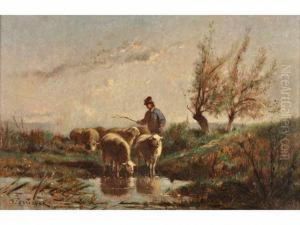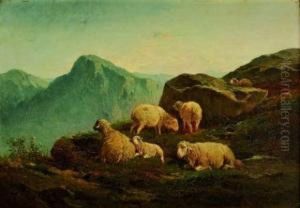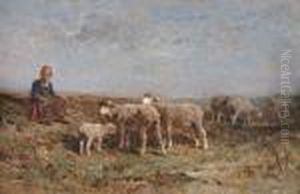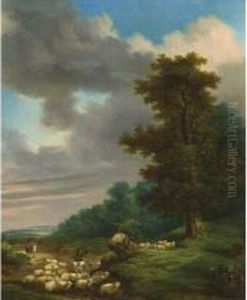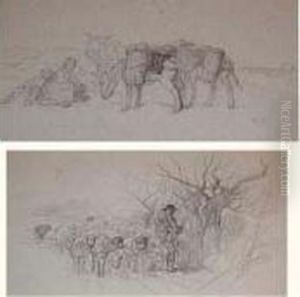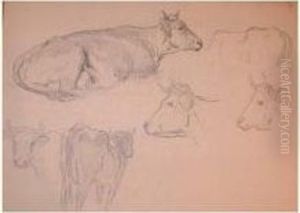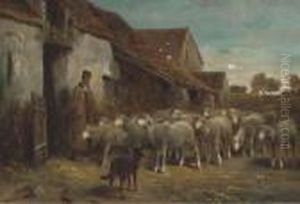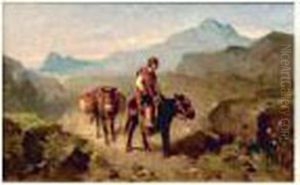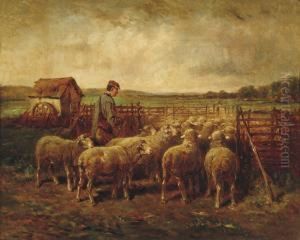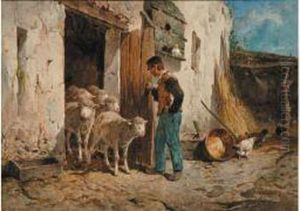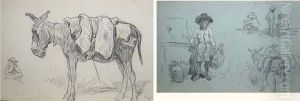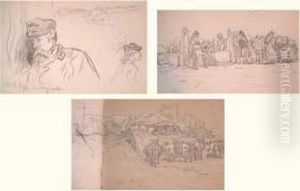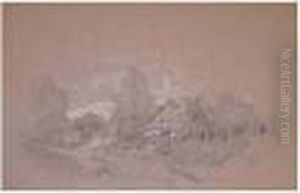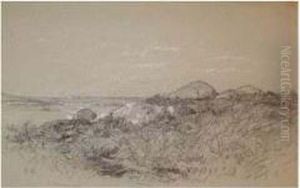Felix Saturnin Brissot de Warville Paintings
Felix Saturnin Brissot de Warville, also known as Brissot de Warville or simply Brissot, was a notable French landscape painter associated with the Barbizon School, a group of artists working in the area of the Forest of Fontainebleau who moved away from the formalism of the neoclassical tradition to embrace a more direct observation of nature. Born on June 7, 1818, in Paris, Brissot showed an early talent for the arts and was trained under the guidance of prominent landscape painters of his time.
His early works exhibited the influence of the classical landscape tradition, but as his career evolved, Brissot started to develop a more realistic approach to his paintings that reflected the Barbizon School's emphasis on naturalism. This shift was partly influenced by his encounters with other Barbizon artists, such as Théodore Rousseau and Jean-François Millet, who were also striving for a greater truth to nature in their work.
Brissot’s art is characterized by its detailed representation of rural scenes, often depicting the French countryside, its peasants, and farm animals. His paintings are noted for their serene and pastoral qualities, and he was particularly adept at capturing the effects of light and atmosphere in his landscapes. He also had a keen interest in animal painting, which became a significant part of his oeuvre.
Exhibiting his work at the Paris Salon, Brissot gained recognition and was awarded medals for his contributions to French art. His paintings found favor with both critics and the public, which allowed him to enjoy a successful career. Throughout his life, Brissot remained true to his passion for the countryside and continued to paint rural France with a sensitivity that endeared his work to many.
Brissot's legacy is held in high esteem, and his paintings can be found in museums and private collections around the world. Although not as widely known as some of his contemporaries from the Barbizon School, Brissot's contribution to the development of landscape painting in the 19th century is nevertheless significant. He continued to paint until his death on February 1, 1892, in La Gaude, leaving behind a body of work that continues to be celebrated for its beauty and tranquility.




![Megalithes En Bretagne [felix
Saturnin Brissot De Warville, Megaliths In Brittany, Oil On Panel,
Signed.]](https://www.niceartgallery.com/imgs/1201459/s/felix-saturnin-brissot-de-warville-megalithes-en-bretagne-felix-saturnin-brissot-de-warville-megaliths-in-brittany-oil-on-panel-signed-961a33e2.jpg)
![Pecheurs Bretons [, Fishermen In Brittany, Oil On Canvas, Signed]](https://www.niceartgallery.com/imgs/1201460/s/felix-saturnin-brissot-de-warville-pecheurs-bretons-fishermen-in-brittany-oil-on-canvas-signed-e7f0e3f5.jpg)

